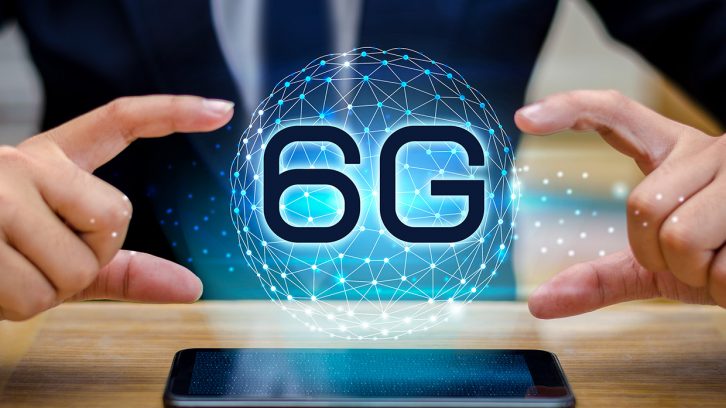FCC Commissioner Starks on the Transition to 6G
Starks said 6G faces “challenges that could threaten our collective vision of a more connected and prosperous 6G ecosystem”

In remarks to the 6G Symposium, FCC Commissioner Geoffrey Starks noted that the 6G “network evolution presents opportunity on an enormous scale” while warning that he is “clear-eyed about the very real and complex challenges we face. Challenges that could threaten our collective vision of a more connected and prosperous 6G ecosystem.”
Those challenges include the lapse in the FCC's authority to conduct auctions that would free up spectrum for 6G deployments and need to develop technologies and strategies that would "make 6G our most energy efficient generation yet."
“What happens over the next 18 to 24 months will be critical for 6G," he said. "So we need a concerted strategy for overcoming obstacles and ensuring this rapidly-developing technology reaches its full potential. I believe a successful rollout of 6G holds the promise of a more vibrant economy, sustainable networks, and connect communities.”
Newer 6G technologies will be important for broadcasters and producers because they will provide even more robust networks for content contribution and creation. They could also be used in combination with NextGen TV offerings for datacasting and other services.
In the Sept. 23 speech, Starks explained that current work on 5G and 5G advanced networks and that a number of industry trends are laying “the cornerstones” for 6G.
Those include the “immense promise is disaggregation,” he said. “Decoupling the hardware and software functions of network components means they can be sourced from multiple vendors. With a modular stack, network operators will have new flexibility to incorporate products and services that best fit their needs. And, they can swap components or make upgrades quickly and nimbly.”
“There is no doubt that these open platforms are starting to take root; domestically, one nationwide carrier is rolling out a cloud-native Open RAN network, and globally there have been more than 100 Open RAN deployments,” he added.
The professional video industry's #1 source for news, trends and product and tech information. Sign up below.
Starks stressed that the federal government has been supporting the development and deployment of Open RAN and that “there is a whole-of-government approach well underway to advance this technology.
“At the FCC, I’m happy to say we’re our part; we recently adopted the 5G Fund, which will include up to $900 million in incentives for Open RAN deployment,” he explained.
In addition, he noted that “NTIA continues to make decisive progress implementing the $1.5 billion Public Wireless Supply Chain Innovation Fund supporting the development and deployment of Open RAN networks.”
But he stressed that “these network advances can only do so much if we’re not providing the spectrum they need to operate. And on that front, we face real challenges. As everyone here knows, the FCC has been without auction authority since March 9, 2023. This authority isn’t just foundational to the agency and the development of 6G, it’s foundational to the country as a whole. The Commission’s auction authority drives innovation, enhances competition, and strengthens our national security. Put plainly, auctions help us free up spectrum and put it into the hands of those who value it the most.”
Despite this problem, Starks argued that they are making crucial progress in implementing “the National Spectrum Strategy. Execution of the strategy will serve as a vital down payment on 6G. By taking an all-the-above approach, this plan puts more spectrum on the table than anticipated, 2,786 MHz versus a target of 1,500. It includes a mix of bands, and will support licensed, unlicensed, and shared models -- all tools that will be useful for deployment of 6G networks."
“So while we’ve accomplished much laying the groundwork for the 6G transition, it’s clear there’s more work to be done. Earlier this year, we made some very important progress when the White House forged a broad international consensus on shared principles for the research and development of 6G. This agreement buttressed open, interoperable, and secure connectivity. Leveraging the strength of our shared commitments to market economies and transparency will ensure those values are baked into rather than bolted on to 6G standards. The importance of principles-based agreements like this cannot be overstated. Without them, we risk falling short of 6G’s full potential while exposing ourselves to new risks.”
An illustration of that, is what 6G networks could mean for sustainability and the environment.
“Like 5G, 6G has the potential to increase our energy efficiency and reduce our emissions in areas like manufacturing, agriculture, and transportation," he said. "But we simply cannot take this for granted. We’ve got to do the hard work. In 2020, the information and communication technology sector was responsible for approximately 4 percent of global energy consumption and approximately 1.4 percent of global greenhouse gas emissions. As data-rich, high-bandwidth applications enabled by advanced 5G and 6G technologies proliferate, so too will mobile data traffic. GSMA Intelligence predicts that by 2030, mobile data traffic is expected to grow more than fourfold, reaching over 5,400 exabytes.”
This ever growing data traffic as well as the fact that 6G will be the first wireless technology to incorporate AI “will also mean a dramatic rise in the amount of data being generated to train AI models. That will require a massive increase in energy to accommodate the new compute power we’ll need throughout networks.”
This means the industry needs to work to reduce its carbon footprint.
“We took a step in the right direction with the White House’s international 6G principles agreement which encourages energy-efficient deployments and operation,” he noted. “When I look ahead, I see real promise for new strategies that will make 6G our most energy efficient generation yet. Utilizing micro-sleep techniques, networks can deactivate and reactivate during periods of low activity, conserving energy without impacting user experience. By implementing new waveform designs, networks will adapt more efficiently to different frequency bands, enhancing spectral efficiency and reducing unnecessary energy expenditure. Or dynamic adjustments in the number of active antenna in response to fluctuating traffic loads, allowing for tailored resource allocation based on actual demand. And, of course, all of these techniques could be applied across multiple 6G networks simultaneously through network slicing. Meaning each network slice could be optimized for specific services while minimizing energy consumption based on real-time demands.”
“But as I’ve said, my optimism about the future is clear-eyed,” he concluded “The promise of 6G will only be realized through a collective commitment to our shared values. It will take a concerted push, informed by conferences like this, to keep us on the right path. So, I want to extend an offer to any of you that have ideas about making our networks more efficient – please come and see me.”
George Winslow is the senior content producer for TV Tech. He has written about the television, media and technology industries for nearly 30 years for such publications as Broadcasting & Cable, Multichannel News and TV Tech. Over the years, he has edited a number of magazines, including Multichannel News International and World Screen, and moderated panels at such major industry events as NAB and MIP TV. He has published two books and dozens of encyclopedia articles on such subjects as the media, New York City history and economics.

